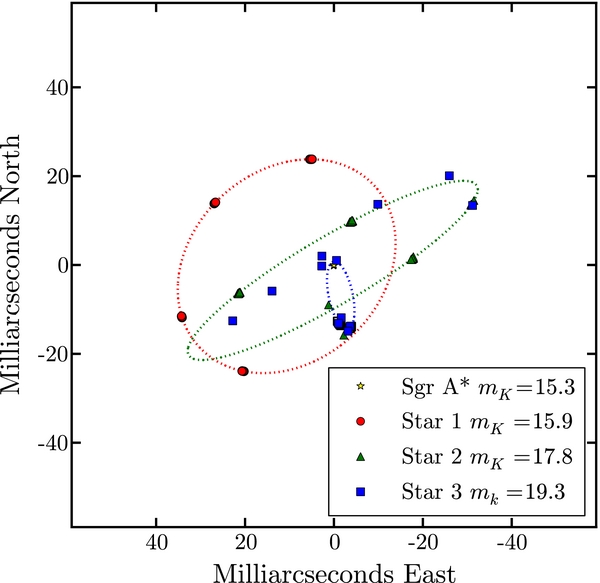Stellar orbits have constrained the distribution of mass in
the Galactic Center to scales where the existence and mass
of a black hole can be determined. We investigated how
near-IR interferometers can improve upon the current
state-of-the art adaptive optics observations. Work
described in Stone et al. (2012) argues that such
observations will substantially improve existing
constraints, and possible enable the detection of General
Relativistic or other non-Keplerian effects.

Simulated observed positions of a starfield around SgrA*, demonstrating that VLTI/Gravity can plausibly map orbits of multiple stars with periods substantially shorter than those currently known.